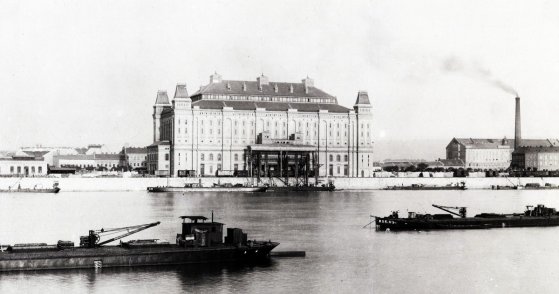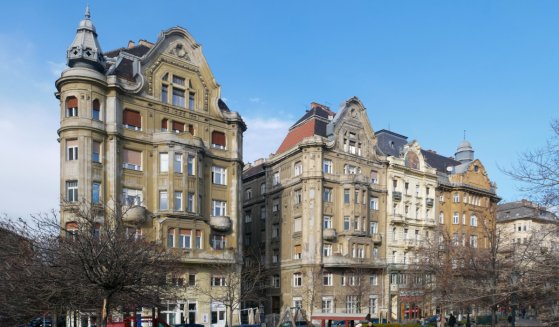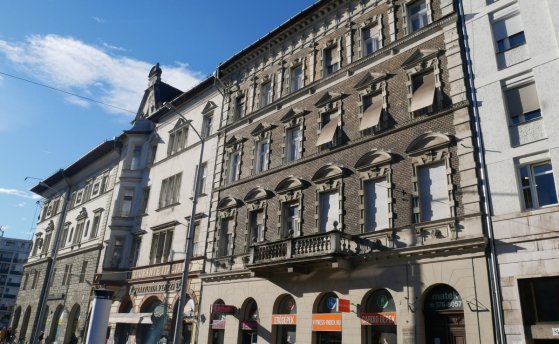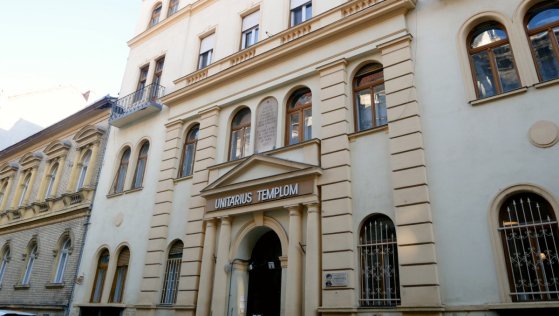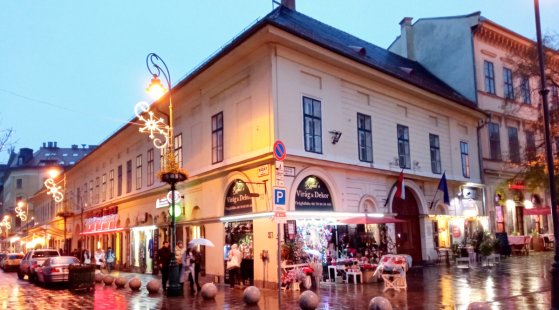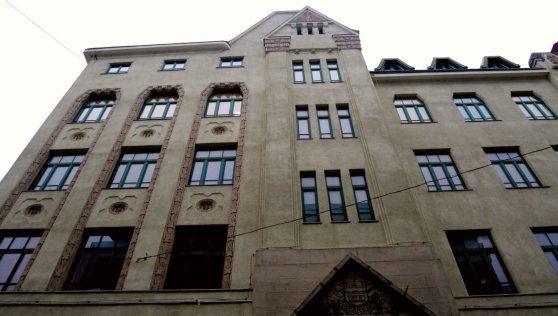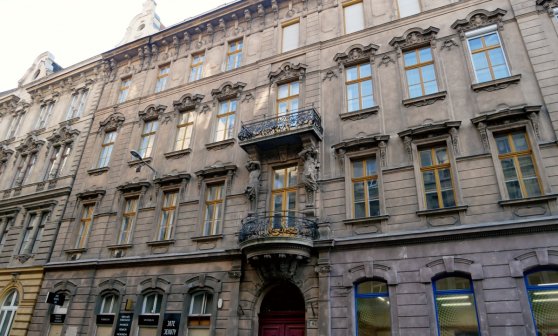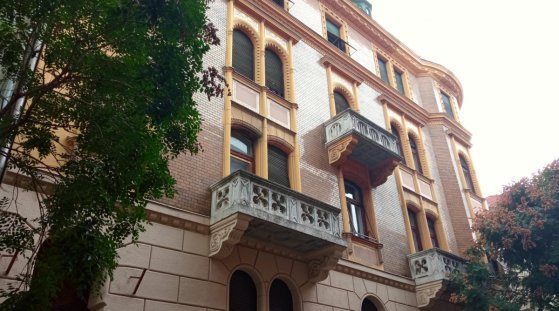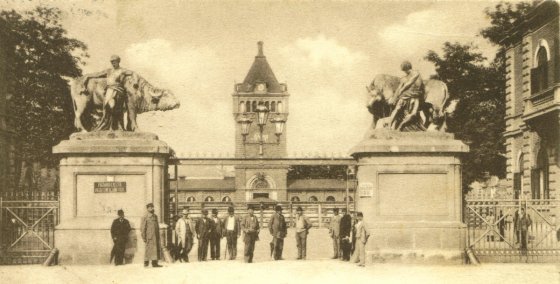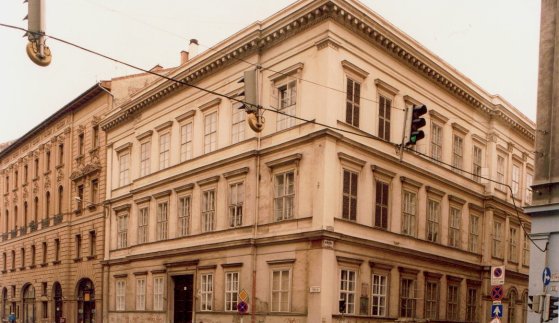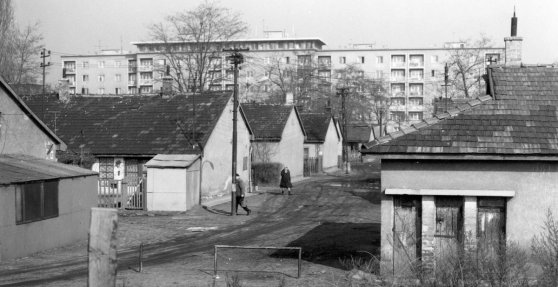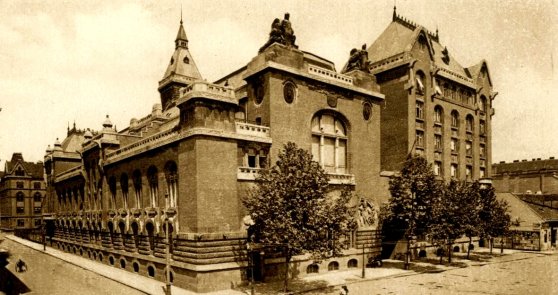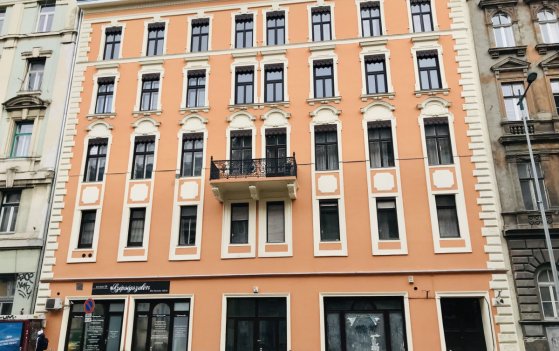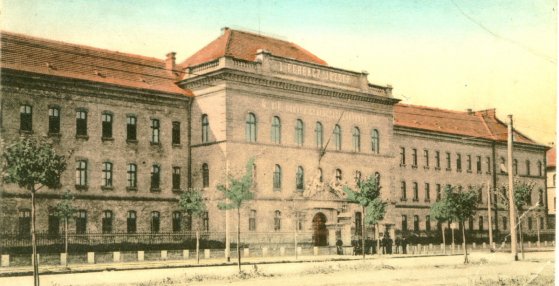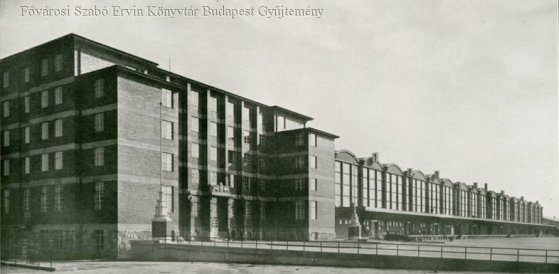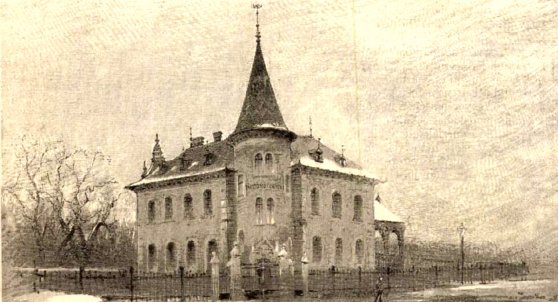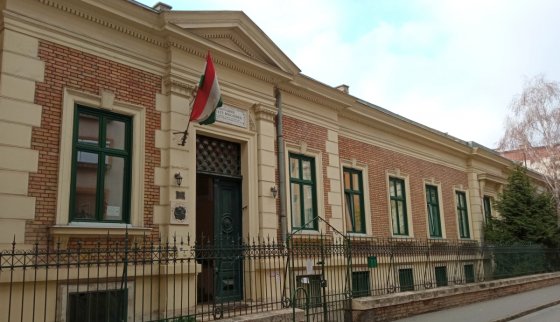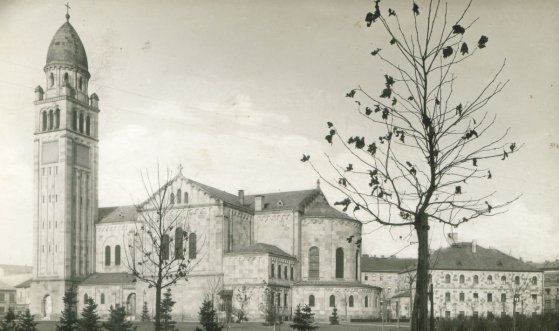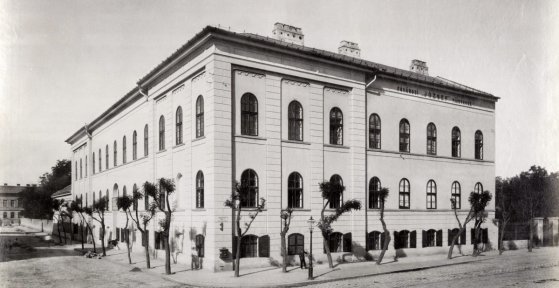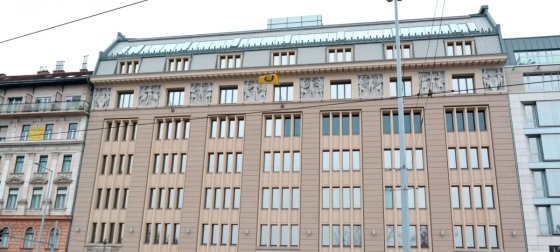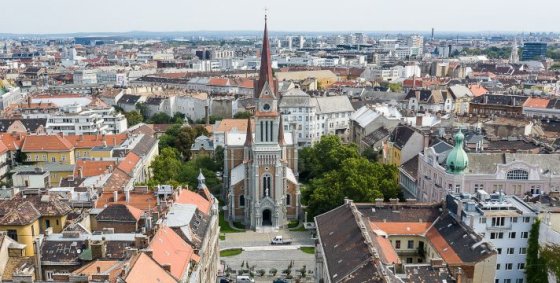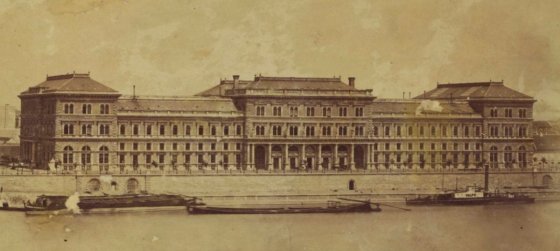 The „intertwined history” of the bridges and the city of Budapest
Which ideas and events have shaped the fate of bridges of Budapest and the cityscape? Alongside many other interesting facts, this question is also answered this newly published book by the Budapest City Archives, which introduces the history of bridges in Budapest.
The „intertwined history” of the bridges and the city of Budapest
Which ideas and events have shaped the fate of bridges of Budapest and the cityscape? Alongside many other interesting facts, this question is also answered this newly published book by the Budapest City Archives, which introduces the history of bridges in Budapest.
Ambrus Gönczi
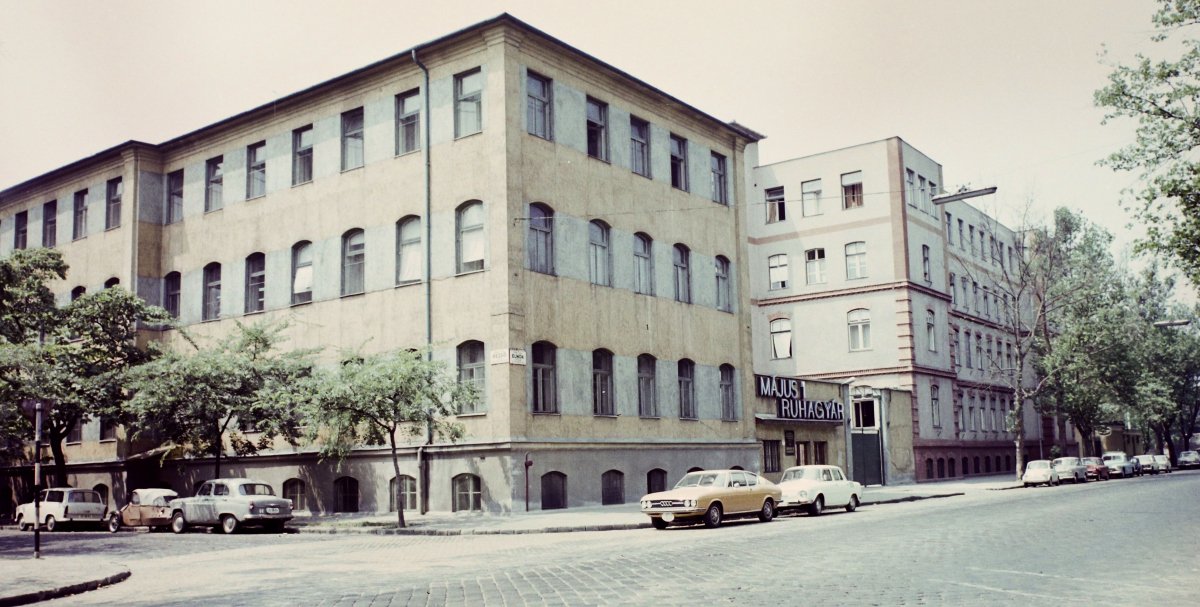 The story of a famous clothing factory in Józsefváros
The story of a famous clothing factory in Józsefváros
March 27, 2023 at 11:00 AM
Close to Nagyvárad Square, at the junction of Elnök Street and Orczy Road, there is a complex of buildings with a huge floor area. There is an office building, a jewellery store, a tailor shop, a communications technology company, a photography and video recording company, and even a table tennis club. In the 1960s and 1970s, one of the largest clothing manufacturers in the country operated behind the walls, but the story did not begin then but at the end of the 19th century.
The afterlife of a grain warehouse - The 140-year-old Elevator House on Boráros Square was a real sight
March 7, 2023 at 3:00 PM
From the 1870s, huge construction works were carried out in Budapest, which was developing into a metropolis. Of course, the Hungarian capital, as the country's economic, commercial and industrial centre not only grew at an ever-accelerating rate in terms of its residential and public buildings, but its industrial sites also multiplied, and their sizes occupied an ever-larger area. An important logistics centre was established close to the southern connecting railway bridge.
The story of the preservation of a factory building in Ferencváros
February 26, 2023 at 4:00 PM
The Laboratory Equipment Factory, completed in January 1963 at the corner of Tűzoltó Street and Thaly Kálmán Street, defined the streetscape of the neighbourhood for decades. Even when hundreds of workers worked in the building with a huge floor area, and even when it stood empty after 1990 and its condition deteriorated year by year. Nowadays, a modern dormitory, mainly inhabited by foreign university students, operates behind the walls, the new function also meant the rebirth of the building.
Architect Ernő Schannen was a master of residential houses - He mastered design in the office of Ybl and Hauszmann
February 5, 2023 at 1:00 PM
Ernő Schannen is a little-known member of the architectural community at the turn of the century. However, his work significantly contributed to the development of Budapest's cityscape, he developed a unique style, in Pest and Buda we can find residential houses designed by him in many places, but he also created a hospital and a bank building, and also castles in the countryside.
The house on József Boulevard, where Feri Neumann became Ferenc Molnár
January 20, 2023 at 10:00 AM
Ferenc Molnár, who was born 145 years ago this January, is one of the most well-known and beloved figures in Hungarian literary history abroad. Pestbuda also wrote about him several times in connection with his novels, dramas and connections to the capital. The writer's own life was also like a novel, full of twists and turns, successes and failures. The house on József Boulevard, which was built by his father and where he lived for the longest time in the capital, was the most important symbol of permanence.
A special place in Ferencváros - the Unitarian Mission House opened 100 years ago in Hőgyes Endre Street
January 12, 2023 at 1:17 PM
A small street opens onto Üllői Road, which bears the name of medical professor Endre Hőgyes, the founder of the Pasteur Institute in Budapest. Not by chance, as this institute once operated here. There is another interesting building on the street, which is known to those belonging to the Unitarian religious denomination, but the majority of the townspeople may not have heard of it. The house is really special, as it is both a residential building and a church.
The oldest building in Ferencváros stands on Kálvin Square - The story of the former Két Oroszlán Inn
December 13, 2022 at 11:00 AM
The house at 9 Kálvin Square is the oldest building not only on the square but also in the capital's 9th District that is still standing today. In the past two centuries, it has been through many things, it has been used for many things, but the most important thing is that it was used and this not very large, but cultural-historically significant building of Pest classicist architecture has survived.
A 110-year-old school building in Ferencváros - one of Albert Kálmán Kőrössy's masterpieces
December 1, 2022 at 9:00 AM
One of the large-scale masterpieces of Art Nouveau school architecture is bounded by three streets, Lenhossék, Vendel and Balázs Béla. Its main facade is so huge that people have to walk at least 50 metres away from it to admire its beauty. When it was completed, it stood out among the single-story houses in central Ferencváros. Nowadays, it is mostly surrounded by modern residential buildings, and perhaps there would be a residential building in its place too if it had not been given a new function a few years ago.
The house where Kálmán Mikszáth regained his zest for life
November 16, 2022 at 9:00 AM
Lovers of literature must have thought many times about the circumstances under which a masterpiece of their favourite author was born. In what environment was that particular poem or novel written, in what state of mind was the poet or writer, did he work in a coffee house, or did he write down the famous lines and sentences at home, or sitting in the open air, in the shade of a tree. Pestubda now presents Kálmán Mikszáth's home on Lónyay Street, where the writer wrote several novels.
110-year-old jewel-box in Bokréta Street - Home of a car manufacturing dynasty
September 3, 2022 at 2:30 PM
On the corner of Tűzoltó Street and Bokréta Street in Ferencváros, there is an eye-catching residential building. Passers-by often stop to take a closer look at its building ceramics, its carefully and artistically carved gate or the small corner tower that decorates its dome. The house was once the home of the internationally famous Zupka carriage manufacturer and then vehicle body builder family, and it was built right next to the factory in 1912. On the site of the assembly plant, a modern residential building stands in Tűzoltó Street, but the former family home designed by the architect János Bach has fortunately been preserved for posterity.
In memory of Marhavágóhíd - one of the capital's meat industry centres was completed 150 years ago
June 30, 2022 at 9:00 AM
When it was completed, it was considered one of the capital's architectural attractions. Many citizens of Buda and Pest, and even visitors from the countryside or abroad, were curious to see what the complex of buildings looked like, which became one of the defining institutions of public food supply from 1872 and remained so for almost 100 years.
Only a house around the corner - An important place in the cultural history of Hungary on Üllői Road
May 30, 2022 at 2:00 PM
The residential house at 17 Üllői Road, on the corner of Erkel Street, does not stand out from its surroundings, it has no special decorations, it is proportionate and simple. Yet it is important and worth presenting because it was the home and meeting place of prominent personalities who had a tremendous impact on Hungarian literature, theatrical life, fine arts, and architecture.
Flowery housing estate from the world of deep poverty - The former emergency houses of Marie Valerie housing estate were demolished 65 years ago
March 17, 2022 at 10:00 AM
The József Attila housing estate is one of the districts of Budapest with the most green areas, trees and bushes, in 2012 it even won the title of the most flowering housing estate in the country. However, fewer and fewer people here know that there was a time when this area was not known for its comfort. Its name was also different, which in itself revealed a lot about the conditions here: Marie Valerie emergency housing estate.
The Józsefváros Telephone Centre fit perfectly into the city, today it houses elegant hotels
February 23, 2022 at 9:00 AM
The incorporation of industrial buildings into the urban environment was an important urban development issue in the 1880s. On the one hand, they tried to move - in many cases relocate - the noisy large plants that often emit polluting substances farther from the city centre, and on the other hand, the leaders of the capital wanted to design the centres suitable for the development and service of public utilities and communications in such a way that they fit as closely as possible into the architecture of a given street or space. Fortunately for posterity, this intention has mostly produced eye-catching results, a good example of which is the József Telephone Centre.
The building that was once home to books - The Révai Brothers' Bookstore on Üllői Road
February 5, 2022 at 9:00 AM
The section of Üllői Road between Kálvin Square and Nagyvárad Square has several buildings that are important not only for their architectural values but also for their cultural history. Fortunately, over the past few years, several of these have been successfully renovated as originally planned. The house at 18 Üllői Road also belongs to this group, it was renovated after many decades of deterioration. Visitors probably do not know that when this house was rebuilt in 1898, it housed the Révai Brothers' Bookstore.
Where there used to be a barracks, there is now a sports hall - The history of the Franz Joseph infantry barracks
January 20, 2022 at 9:00 AM
Opposite Népliget stood a military object for more than a hundred years, the sight of which largely determined the intersection of Üllői Road and Könyves Kálmán Boulevard. Today it is replaced by a huge handball hall, which is currently hosting the first international sporting event. The history of the new building is still very short, but it offers a good opportunity to get to know the old one.
The past of Nagyvásártelep - The food trade centre of the capital was built ninety years ago
January 6, 2022 at 9:00 AM
When the Central Market Hall in Fővám Square was handed over in 1897, the leaders of the city believed that the process of food industry development and freight transport, which had been going on for decades at the time, had come to an end. Steam mills, slaughterhouses and meat plants were lined up along Soroksári Road, and the needs of retailers and wholesalers were fully met with the establishment of the Danube Coast Freight Station and the construction of public warehouses between the Southern Railway Link Bridge and Fővám Square. However, it soon became clear that this was far from the case, and there was an urgent need to ensure the daily flow of goods through a wholesale market.
The Home of Hungarian Teachers is still standing today - Teachers living in poor conditions could move into the tower building
December 17, 2021 at 10:00 AM
At the beginning of Orczy Road, close to Nagyvárad Square, stands a house with a tower, reminiscent of a medieval castle, quietly hiding behind the surrounding trees. Few know that this building once served as the home of the poor teaching women in the capital.
The most beautiful nursery in Pest was designed by Miklós Ybl
December 2, 2021 at 2:00 PM
At the corner of the Nagy templom and Nap Street in Józsefváros is a beautiful house made in the Neo-Renaissance style. It is already important because of its designer, Miklós Ybl, but the client, the First Pest Nursery Association, also makes the building - still operating in education - special.
The Church of Saint Vincent de Paul in Ferencváros was consecrated 85 years ago
November 20, 2021 at 11:00 AM
A fine example of historicist architecture is the Church of Saint Vincent de Paul at the intersection of Mester Street and Haller Street in Ferencváros, which was consecrated in 1936, 85 years ago. Its creator was Gáspár Fábián, who, as one of the most outstanding architects of his time, designed about fifty church buildings. The carved sandstone building, modelled on Romanesque churches in northern Italy, can accommodate up to 2,000 people. From the top of the 55-metre tower, an amazing panorama is a delight for those climbing the staircase.
Once upon a time there was a boy's orphanage - Josephinum designed by Mihály Pollack got its name from Palatine Joseph¬
October 10, 2021 at 10:00 AM
The support and upbringing of young children who lost their parents, and the satisfaction of their daily needs in Hungary until the middle of the 18th century was undertaken by the churches. The first city orphanage opened in Kőszeg in 1741, and then in the following decades similar institutions maintained and operated by the settlements were built in Selmecbánya [today Banská Štiavnica], Sopron, Nagyszombat [today Trnava] and Veszprém. In Pest, although prominent citizens donated significant sums for this purpose in the 1790s, only 100 years after the opening of the one in Kőszeg was the foundation stone of the first educational institution of this type laid, and it named after Palatine Joseph.
Art Deco on Boráros Square – Former headquarters of the Hangya Cooperatives turns 100
February 6, 2021 at 11:00 AM
In 1920 a new chapter began in the life of the Hangya Cooperative, which once had shops all over the country. The company decided to celebrate the upcoming 25th anniversary of its creation by building a new headquarters. The art deco-style building designed by Dénes Györgyi was completed quickly at present-day 30 Közraktár Street. The proud palace has stood for one hundred years on the three plots, highlighting the former success of the Hangya Cooperative.
A place of beauty in the heart of the city – 225 years of Bakáts Square
October 10, 2020 at 12:00 PM
There are few places in modern Budapest where the defining institutions of community life can be found side by side. There may not even be such a place any more. Nevertheless, one-hundred or one-hundred and fifty years ago people believed it was vital that they not have to cover large distances to go to church, drop their Children of at school, reach a hospital quickly or sort official matters out. It was best, if church, school, hospital, administrative offices or maybe even a cinema or social club could be found nearby. Bakáts Square was just such a place.
Replanned twice by the great Ybl – Construction of the Main Customs House began 150 years ago
September 30, 2020 at 10:00 AM
The stunning Renaissance revival palace of the Main Customs House by Miklós Ybl is better known today as Corvinus University. The building has defined the view of the Danube embankment since its completion. A lesser-known fact about the building is that it was initially planned for Kossuth Square. Foundation work began but later stopped when Gyula Andrássy (the prime minister in office at the time) supported the Budapest City Council in the dispute about the site. The building was moved to Ferencváros, and Ybl was forced to redraw his plans for the palace twice before construction began 150 years ago.
More articles
 The „intertwined history” of the bridges and the city of Budapest
Which ideas and events have shaped the fate of bridges of Budapest and the cityscape? Alongside many other interesting facts, this question is also answered this newly published book by the Budapest City Archives, which introduces the history of bridges in Budapest.
The „intertwined history” of the bridges and the city of Budapest
Which ideas and events have shaped the fate of bridges of Budapest and the cityscape? Alongside many other interesting facts, this question is also answered this newly published book by the Budapest City Archives, which introduces the history of bridges in Budapest.
 The Bridge Report, which brought a turning point in the history of Budapest
A travel report that changed the history of Pest and Buda, as well as Hungary. The little book contributed to the change of half a thousand years of legal customs and the implementation of an investment of unprecedented size and technical quality. This book was The Bridge Report [Hídjelentés in Hungarian].
The Bridge Report, which brought a turning point in the history of Budapest
A travel report that changed the history of Pest and Buda, as well as Hungary. The little book contributed to the change of half a thousand years of legal customs and the implementation of an investment of unprecedented size and technical quality. This book was The Bridge Report [Hídjelentés in Hungarian].
 Drama on the university wall - The heroic monument was planned 95 years ago
In the constant hustle and bustle of the Egyetem Square in Pest, the students may not even notice the monument that decorates the short section of wall between the church and the central building of ELTE. However, it commemorates their predecessors, the heroes who fought for their country in World War I, and those who heroically helped them. The first design of the dramatically collapsing soldier was born in 1928, ninety-five years ago.
Drama on the university wall - The heroic monument was planned 95 years ago
In the constant hustle and bustle of the Egyetem Square in Pest, the students may not even notice the monument that decorates the short section of wall between the church and the central building of ELTE. However, it commemorates their predecessors, the heroes who fought for their country in World War I, and those who heroically helped them. The first design of the dramatically collapsing soldier was born in 1928, ninety-five years ago.

